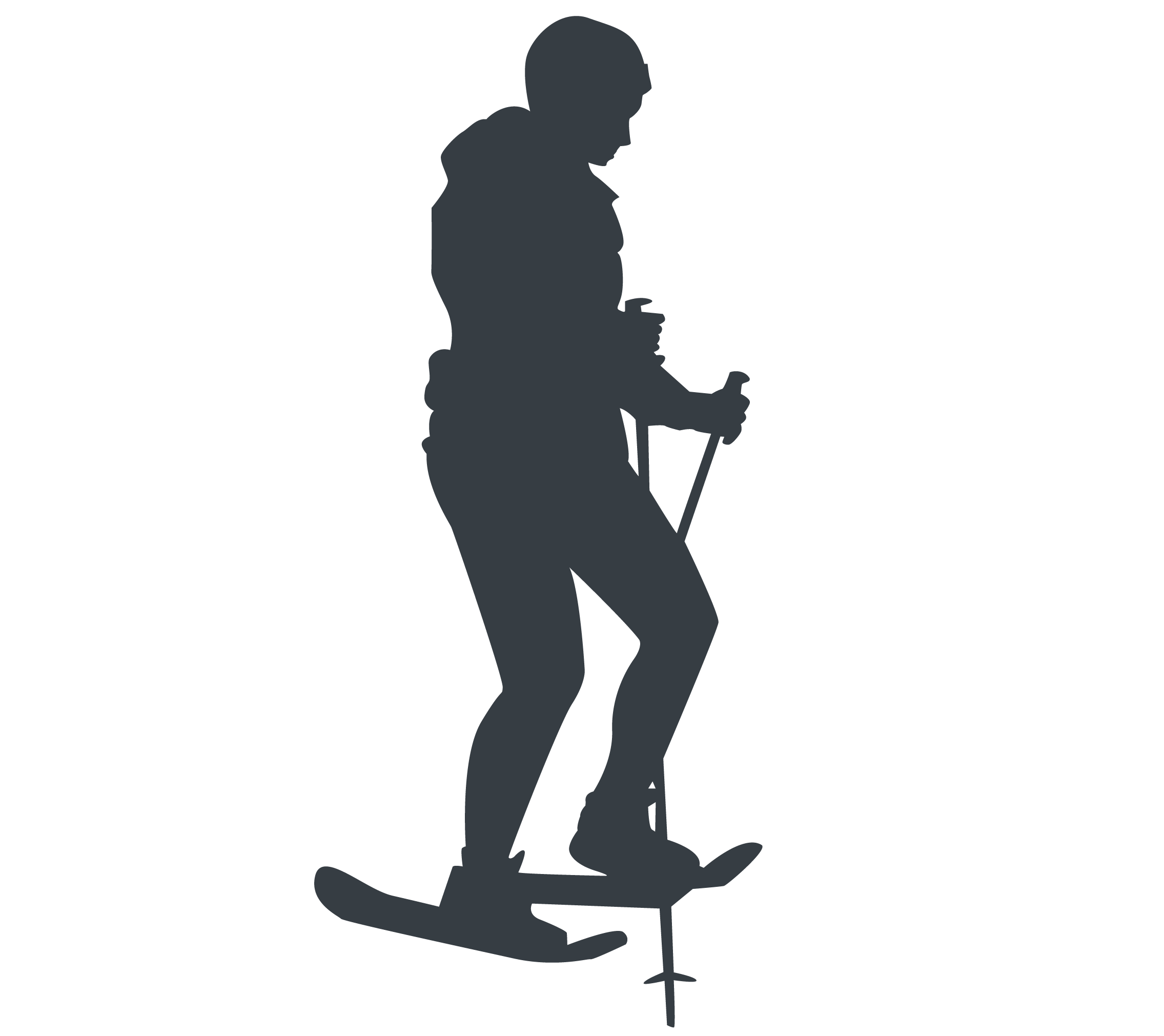Snowshoeing injury is rare and has not been extensively studied.

Snowshoeing is a recreational activity that offers social, health, and fitness benefits. Participants wear snowshoes in order to walk on the snow, distributing their weight over a larger area to avoid sinking. Injuries tend to occur as a result of the environment rather than the individual.
(see Section 04 - Prevention)
Snowshoeing injury is rare and has not been extensively studied.
Snowshoeing injury has not been extensively studied; the estimated number or frequency of injury in snowshoeing is unknown. From the few available studies, injuries in snowshoeing were caused by environmental conditions rather than the characteristics of the activity or the equipment involved. For example, off-trail snowshoeing may expose participants to potentially dangerous situations such as avalanches, glacier crevasses, or snow immersion situations resulting in suffocation.
There is no clear association between a risk factor and snowshoe-related injury demonstrated in the literature. Environmental conditions and snowshoe equipment are potential risk factors that require further examination.
Some muscle soreness or joint pain is expected when increasing your level of physical activity. It is important to listen to your body for persistent or worsening pain, and to know when to rest. Learn more about how to prevent injuries while snowshoeing.
Talk to your organization, club, or school, if applicable, about the prevention strategies below and how they might be incorporated into training and policies.
Adopt strength training exercises designed to prevent injuries to the ankle and other body parts. The Oslo Sport Trauma Research Centre has developed exercises that specifically help reduce the risk of injuries. This resource includes videos and PDFs for download.
Learn more about exercises to help prevent ankle injuries.
For more exercises, visit http://fittoplay.org/.
Education
AdventureSmart is a national program providing information to keep you safe while participating in outdoor recreational activities.
Learn more about snowshoeing safety.
Learn more about backcountry safety.
Learn more about avalanche safety.
Sleep, Vigilance and Sport Injury Prevention
Being successful in physical activity requires a high degree of alertness, also known as vigilance. Sufficient sleep helps your body to recover, allows you to achieve your goals, and reduces your risk of injury. Getting less than 8 hours of sleep can increase your rate of injury by up to 70%! Watch this video to learn more about how sleep and vigilance are connected.
Sport-related Physicals
Snowshoeing can be a physically demanding activity and some pre-existing conditions may increase the risk of injury. An annual sport-related physical evaluation ensuring fitness to participate can help to reduce risk of injury. KidsHealth provides information about what sports physicals are, why they may be appropriate and where you may go to get them.
Learn more about Kids Health Sports Physicals.
Talk to your organization, club, or school about the prevention strategies below and how they might be incorporated into training and policies.
Adopt strength training exercises designed to prevent injuries to the ankle and other body parts. The Oslo Sport Trauma Research Centre has developed exercises that specifically help reduce the risk of injuries. This resource includes videos and PDFs for download.
Learn more about exercises to help prevent ankle injuries.
For more exercises, visit http://fittoplay.org/.
Education
AdventureSmart is a national program providing information to keep you safe while participating in outdoor recreational activities.
Learn more about snowshoeing safety.
Learn more about backcountry safety.
Learn more about avalanche safety.
Sport-related Physicals
Snowshoeing can be a physically demanding activity and some pre-existing conditions may increase the risk of injury. An annual sport-related physical evaluation ensuring fitness to participate can help to reduce risk of injury. KidsHealth provides information about what sports physicals are, why they may be appropriate and where you may go to get them.
Learn more about Kids Health Sports Physicals.
Talk to your organization, club, or school about the prevention strategies below and how they might be incorporated into training and policies.
Adopt strength training exercises designed to prevent injuries to the ankle and other body parts. The Oslo Sport Trauma Research Centre has developed exercises that specifically help reduce the risk of injuries. This resource includes videos and PDFs for download.
Learn more about exercises to help prevent ankle injuries.
For more exercises, visit http://fittoplay.org/.
Education
AdventureSmart is a national program providing information to keep you safe while participating in outdoor recreational activities.
Learn more about snowshoeing safety.
Learn more about backcountry safety.
Learn more about avalanche safety.
Sport-related Physicals
Snowshoeing can be a physically demanding activity and some pre-existing conditions may increase the risk of injury. An annual sport-related physical evaluation ensuring fitness to participate can help to reduce risk of injury. KidsHealth provides information about what sports physicals are, why they may be appropriate and where you may go to get them.
Learn more about Kids Health Sports Physicals.
The role of health professionals in preventing injuries while snowshoeing has two main components:
Adopt strength training exercises designed to prevent injuries to the ankle and other body parts. The Oslo Sport Trauma Research Centre has developed exercises that specifically help reduce the risk of injuries. This resource includes videos and PDFs for download.
Learn more about exercises to help prevent ankle injuries.
For more exercises, visit http://fittoplay.org/.
Education
AdventureSmart is a national program providing information to keep you safe while participating in outdoor recreational activities.
Learn more about snowshoeing safety.
Learn more about backcountry safety.
Learn more about avalanche safety.
Sport-related Physicals
Snowshoeing can be a physically demanding activity and some pre-existing conditions may increase the risk of injury. An annual sport-related physical evaluation ensuring fitness to participate can help to reduce risk of injury. The American Academy of Pediatrics provides information about preparticipation physical evaluation.
Learn more about Preparticipation Physical Evaluation.
